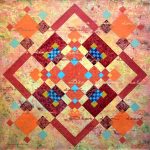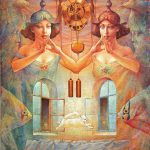Roman style
In the tenth century, at the turn of the millennia a single pan-European style arose – the Romanesque. He remained dominant in medieval Western Europe during the 11th and 12th centuries. The term “Romanesque style” in translation means “Roman”.
Signs of style
Powerful walls, narrow slit-like windows, lack of decorations with the exception of the arcade, the presence of towers characteristic of the architecture of this style. However, on the other hand, the interiors of the Romanesque style are filled with warmth and harmony, inherent in smooth forms of arches and majestically quiet decor.
The decor is dominated by massive elements and only necessary for a minimum life – beds, mostly with childbirth, wooden coarse chairs with high back, chests that are fastened with metal overlays. The comfort was achieved by the treatment with fabrics and carpets. Mandatory element – the hearth with hinged extraction. A special feature of the Romanesque style is the ornamentation of leaves and curls on the door and window frames.
Gamma-style
Romanesque style is somewhat ascetic, so in this case, it is not superfluous to add a room of lightness and interesting decor elements. It is the feeling of lightness that the luxurious tapestries of Crimean artists Lyudmila and Stepan Djus give. It is noteworthy that masters use in their tapestries more than 100 shades of color.










